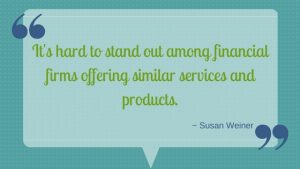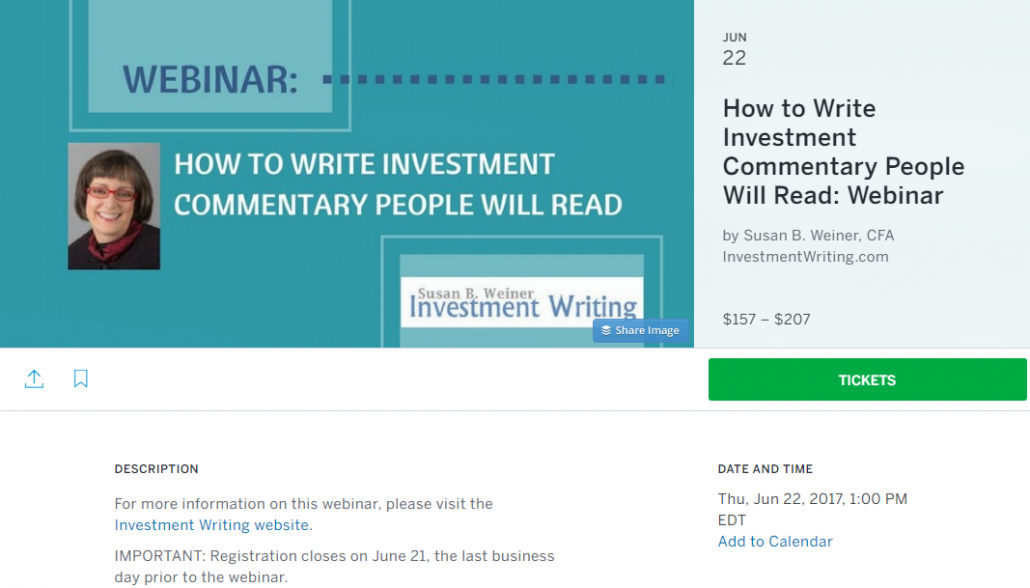Is there a place for influencer marketing in asset management?
After Joe Polidoro of Polidoro Marketing and I traded emails about influencer marketing for investment managers, I asked him to contribute this guest post.
Is there a place for influencer marketing in asset management?
By Joe Polidoro

“Influencer marketing” is such a buzzword that it’s lately been declared dead.
But word-of-mouth and peer recommendations have been with us for as long as people have had something to sell. Influencer marketing—leveraging word-of-mouth promotion from online influencers—is just the latest evolution of this time-honored marketing technique.
Influencer marketing:
- Lives where we live, at least regarding news and information: on social media. According to the Pew Research Center, six out of 10 people get their news on social media platforms.
- Relies on the greater trust most people have in word-of-mouth. Nielsen has found (in an article that’s no longer available online) that an overwhelming 92% of people globally trust user-generated content and word-of-mouth over traditional advertising.
- Ideally consists of user-created content, which is seen as more authentic and more trustworthy than advertising content. (Less ideally, but still effective, the influencer shares company-created content.)
- Often focuses on personal experience, not on the product or service. Seeks to educate, humanize, or even entertain—not to sell.
- Is more affordable, more targeted, and more measurable than traditional advertising.
- Can accomplish a number of precise goals, from raising awareness to increasing online engagement to encouraging specific actions.
- Successfully reaches not just millennials but also older audiences.
Banks are doing it
Influencer marketing comes in two flavors—paid and earned. Firms will pay celebrities and even lesser-known people who have sizeable, passionate social followings to interact with their brand.
For example, American Express’s #MyAmex campaign gave control of its Instagram account to six owners of small but high-profile business owners to produce running stories of how the Amex Card facilitates their businesses, earning 10 million impressions and 40,000 engagements. Scotia Bank, Chase Sapphire, and US Bank have run equally successful paid influencer marketing campaigns.
Earned influencer marketing tends to rely instead on larger numbers of smaller-scale influencers or everyday people.
TD Ameritrade’s multi-platform #humanfinanceproject “movement” relied on real people—advisors—“to showcase the great work that financial advisors are doing, particularly independent registered investment advisors.”
Capital One’s #EveryDayMoneyBoston Instagram campaign sought to humanize its brand within its community, featuring photos of Bostonians supporting local causes, and attracting a much viewed post from New England Patriots wide receiver Julian Edelman.
And TD Bank’s #ShouldaBeenAVideo featured an Instagram-based photo contest held in partnership with Polaroid, receiving over 3,000 posts, many by Instagrammers with very large followings.
Even relatively small-scale earned influencer marketing campaigns can make a big business impact.
To promote its Cardless Cash mobile app feature, Massachusetts-based Avidia Bank relied on financial social media influencers as part of an integrated online campaign, resulting in a 13% increase in app enrollments, positive sentiment of 83% around the campaign, and an over 100% boost in Twitter engagement.
Can asset managers do it?
Great. Influencer marketing works well with consumers. What about with intermediaries—particularly the often highly sophisticated audiences most asset managers market to?
The first hurdles for asset managers are the FINRA and SEC proscriptions on testimonials, entanglement, and adoption. Recent FINRA notes seem to clear a path for influencer marketing. With compliant disclosure, it would seem that even influencer marketing for products might be feasible.
But for Rule 2210 to apply, online content has to relate to products or services. Educational or otherwise non-product-specific content wouldn’t apply. The faster way to the hearts and minds of advisors is not to push product but to educate and inform. This creates a fairly large space for some interesting influencer marketing approaches.
For example, a manager of advisor-sold municipal bond funds—a more retail product—might engage end investors and advisors by sponsoring a photo contest of fund-financed public projects on targeted social media (Instagram, Facebook) with the hashtag #WeBuiltThat.
For asset managers who want to influence a much smaller, specialized, non-retail audience, highly targeted efforts that look less overtly like campaigns may be more fruitful.
A liquid alts manager seeking to break into the institutional market might produce a series of institutional-level content relating to its philosophy and approach—then share it over time with a growing set of highly selected institutional investors, consultants, reporters, and other influencers. And share similar content created by trusted third parties.
Campaigns like this require time, content, coordination, and cooperation from its more social media-savvy mid-level and senior employees, who would be expected to share the same content with their networks.
Hey, I didn’t say it was easy. But as a researcher on peer influence at MIT Sloan School of Management said, “most human behavior is the result of learning from other humans.” Especially in today’s hyper-connected, super-cynical environment, asset managers may do well to learn from their bank brethren.
More reading
Pass the Word: Peer Influence Has a Big Impact on Online Market Dynamics
A New Way to Measure Word-of-Mouth Marketing
Getting a Sharper Picture of Social Media’s Influence
McKinsey Says Influencer Marketing in Social Media Generates 2 Times the Sales of Paid Advertising
Joe Polidoro is founder and president of Polidoro Marketing, offering strategic communications consulting and agency services since 2003 that have helped B2B companies better express their value—increasing sales, improving revenues, and enhancing brands.
Note: This was updated for an outdated link on Nov. 16, 2022.













